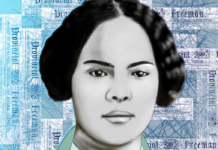So, I was a little sick. Sorry I missed you. But I came back to share that despite President #45 declaring victory over Covid, it ain’t going nowhere no time soon. No vaccine or cure is coming to save any of us in the near future. So with that being said, what do the regular folks living on planet earth do in the meantime about our lives? I think, while I was ill, this was the singular most daunting question that I pondered the most. While I did not have Covid and lost my mind trying to find my daughter a local testing site for her age ( because apparently toddlers do not have droplets or are perceived non-transmitters I guess with almost no testing sites urgghh), this question captured my mind. What do we do in the meantime?
As an educator, thankfully, local Atlanta schools decided to keep schools closed due to recent spikes and fear of further community spread. But closing doors does not mean we have answered the true challenges our kids and their families are facing in this moment. No amount of Zoom video chats will fix what is broken in our educational system during remote learning and that is the anachronistic industrial design of American learning systems. At the start of compulsory public schools in the 1920s, they were built to prepare kids for industrial and standardized jobs that did repetitive and simple tasks ( and to keep kids from competing in the labor market), not to grow and nurture individuals.
So in this season, whole classes are not aggregated together as the sum parts of basic and average kids depending on each other to learn or not. Kids are by and large, individually learning at home and have never experienced this level of independence to finally explore themselves as an individual and discover what works best for them. What’s more parents have mostly never had the luxury of this individual learning experience for themselves so they definitely have no reference point to help their own children through this new modality of learning as well. Even this week, as I tried to help one of my students figure out what supports she needed to improve in class, she said, “Those Youtube Videos are too long for me to watch and teach myself. I just want to know where the answer is so I can be done with it.”. This mindset is pervasive with most kids that just want an answer so they can just be done and fit in with everyone else. But what if kids understood their individual passions, strengths and weaknesses and didn’t just want to go with the crowd? What kind of world would that be?
Harvard Professor Todd Rose, Ed.D, coins this focus on individuality in students as their “jagged profile” because he believes that their is no such thing as an average student but students who have jagged edges and don’t fit any singular mold. Yet, while schools are fretting over the average kid in this pandemic will lose 20% of their skills because of this disruption to traditional learning, Rose counters this with group level statics that were not designed to serve and reach individual students. Education has been playing to group averages so long with the same assignments and standardized assessments and oversized classrooms that in this moment we don’t know how to reach individual students and meet their needs. So parents are screaming to let their kids come back in massive school buildings with thousands of kids and no safety protections when we really need to simply be creative and innovate on our design with our individual students in mind.
As always, what does that even look like:
Sadly, Rose does not give us a picture of how this works for everybody involved. But I will take a stab at it and invite others to help me imagine this new space as well.
So let me first say kudos to Atlanta’s Mayor for heeding the call for more citywide support with the city’s learning pods. While this was a great first step, the learning pods were full within days of announcement and were not a part of a larger more comprehensive strategy put forth in tandem with other community partners, districts and even corporate employers. When I think about serving EACH INDIVIDUAL CHILD in Atlanta, I think about the overwhelming undertaking this would be for a school alone. But with an entire ecosystem of support what could really happen?
We could
- Embed cognitive sciences into K-12 school curriculum so we can unveil the magic trick to kids ( and parents) about how their brain works to learn. So let’s start talking about our brains more with kids earlier. Great example from Imagine Scholar in South Africa
- Develop Individualized learning plans and “Jagged” Learner Profiles for every kid every year that starts with their strengths, challenges and needs. New assessment tools that could help are Youscience and Thrively that can help teachers and parents figure out what kids like and work well doing. ( THIS IS FREE FOR GEORGIA PUBLIC SCHOOL KIDS). We also need to make classroom sizes smaller in public education for this logistically to work.
- Design alternative performance based assessments that provide multiple mediums for students to demonstrate their learning in authentic ways for them and incorporates students strengths from their learner profile. ( So yeah, that required multiple choice test…that needs to go)
- Build an ecosystem of industry partners who are invested in K-12’s redesign. Teach X is a mobile app ( that I made) to connect schools to new partners that help make authentic and individualized learning possible. Teachers can’t do this alone.Can you imagine a teacher reviewing 100 unique and different assessments alone.
- Coach partners from regional industries and corporations to review and provide feedback on these assessments as well as in upper grades have strategic partnerships for apprenticeships and professional mentorship. This is similar to Microsoft’s TEAL program that coaches engineers to co-teach Computer Science classes in high schools. (This would really help teachers if they did not have to do all the “grading” on their own.)
- Monitor Progress consistently with a seamless and integrated tech platform ( haven’t seen this yet because most districts use so many tech tools and none talk to each other urggh)
- Partner with Universities because we need consistent testing to safely reopen public schools. Historically Black Colleges are pooling over $15 million in funds have created a network of testing sites across 104 schools to serve predominantly black schools and communities who have been disproportionately impacted by Covid-19. Could a testing strategy be possible for public schools in partnership with Atlanta’s numerous colleges and Universities
- Prioritize students and families with historical achievement gaps, Similar to RISE Colorado, and educate and engage those families with deeper resources and targeted support for kids and their families.
The reality is Covid is not going nowhere for a while but neither will our kids if we don’t get darn creative in how we get them through this season. We have to use every tool at our disposal to go beyond the average and toward meeting the needs of each individual. Zoom can’t save us and neither will reopening the same ol school that’s failing 80% of our students. Other industries have gotten really creative, now it is the schoolhouses turn or the result could be more deadly than the Covid virus for our most vulnerable kids.
____________________
This article was first posted on awtyblog.weebly.com










